Ertach Kernow - William Borlase the Cornish Antiquarian
William Borlase the Cornish Antiquarian is arguably one of the most important people who have contributed to knowledge about Cornwall’s historical past. Three hundred years ago on 22nd April 1722 William Borlase became Rector of Ludgvan a position he retained for fifty years until his death on 31st August 1772. This article marks 250 years since his death and hopefully brings him and his work to some greater prominence in the 21st century.
Ertach Kernow articles have mentioned him on numerous occasions, but many will wonder who he was and what he did to warrant such acclaim. Today antique books can be a source of some wonderful historic facts, but one has to be wary and check these with later information that uses the latest scientific evidence. William Borlase for example travelled around Cornwall recording and writing about many aspects of Cornish historical heritage, however many of his 18th century interpretations have proved totally wrong once modern archaeological technical practices are employed. However, we should not dismiss his work lightly as he recorded many objects, describing and drawing places that have been subsequently destroyed and lost to history. It is this lost information that is so crucial to helping rebuild and improve a picture of Cornwall’s historic heritage.
That the Borlase family is ancient in Cornwall is in no doubt. They originally descend supposedly from French minor nobility and settled in St Wenn parish taking on the name of the place they lived, Borlase, around the 12th century. Over the following centuries they then began to spread out around Cornwall and beyond, with William’s family line settling and expanding from the St Just area. William Borlase was born in Pendeen on 2nd February 1696 third surviving child of John and Mary Borlase and attended school in Penzance followed by private tuition in Plymouth aged about fourteen. In 1713 he attended Exeter college in Oxford where he obtained his bachelors and master’s degrees. After becoming a deacon in 1719 the following year he was ordained a priest by the Bishop of Exeter. As was the way at that time through contacts he became Rector at Ludgvan inaugurated there by the Bishop of Exeter on 22nd April 1722. In his words this ‘owed a sufficiency above want (though below envy) all the rest of my life’.
At that time and having perhaps the advantage of not being close to scrutiny by the Bishop of Exeter, under which Cornwall was administered ecclesiastically, there was much pluralism and non-residency by the clergy. This enabled many clergy to have a better living through more than one parish and employing a curate to serve in the others. William himself additionally obtained the vicarage of St Just in 1732. He had married Anne Smith by whom he had six children, four of whom survived to adulthood, three becoming clergy. Despite having two parishes he was known as a conscientious resident clergyman holding the full range of traditional services as well as additional services for commemorative events.
Regarding Cornish interests he wrote; ‘At times I collected mineral and metallic fossils, with which the rich copper-works of the late Earl of Godolphin, in Ludgvan parish , fortunately enabled me with the greatest ease to gratify my friends at home and abroad; whilst in return I received such information and encomiums on the productions of the Cornish mines, as encouraged me now first to think of studying the natural history of my native county, and look more narrowly into the structure and properties of the so much commended fossils, as well as trace the other, though less interesting, bounties of nature’. William also noted ‘About the same time, perceiving the several parts of Cornwall abounding with many monuments of remote antiquity , and finding them for the most part either not at all mentioned, or the few that were noted, passed with less examination than they deserved, I enlarged my plan, and entered upon the study of the Druid learning , with the religion and custom of the ancient Britons before their conversion to Christianity; intending to describe and explain the several unknown, or hitherto ill understood, remains in Cornwall.’ This was the beginning of his research work that would lead to his later writings that would benefit people with Cornish interests and researchers into the 21st century.
It seems that besides a happy family and busy working life filled with many interests William enjoyed some leisure time. In a letter to his uncle George Borlase, he wrote; ‘There is no part of England that abounds so much in the necessaries, and at the same time has so many of the elegancies of life, as that of Mount's Bay. The gentry, most of whom are our near relations, are of a free frolicking disposition. In the Summer time we meet (some ten or a dozen) at a bowling green, there we have built a little pleasure house and there we dine, after dinner at bowls, and by so frequently meeting together we are as it were like so many brothers of one family, so united, and so glad to see one the other.’
Besides all of these activities between 1738 and 1751 he took in pupils who boarded with him at the rectory. These included Thomas Hawkins, John St Aubyn, Richard Vyvyan and John Prideaux Basset and as scions of illustrious wealthy Cornish families illustrate the high esteem William Borlase was held. In due course two of Borlase’s pupils would be elected as members of parliament, Thomas Hawkins for Grampound and Sir John St Aubyn at Launceston.
Something that might interest family historians is a comment included in a rebuke by Borlase to his curate at St Just. he writes; ‘You keep a list of the persons buried , married and christened not in the Register, but in a loose scrip of paper.’ Is it no wonder that on so many occasions researchers are unable to find the names of people in the registers, not only in St Just but across the country as many vicars and curates were just as guilty of this.
The threat of Methodism arrived in July 1743 with the first visit of Charles Wesley followed soon after by his brother John. They found St Just an ideal place to revive religion in their form. However, they found that the Cornish clergy would not be supplanted quietly and found a leader in Walter Borlase, Williams older brother, who was Vicar of Madron, a magistrate and heir to his father a major St Just landowner. Although there is no record of any actual persecution of Methodists by William, he clearly disapproved as shown in his personal letters. Happily, it seems that John Wesley admired Williams studies and writing, he noted in relation to Cornish Antiquities ‘he is a fine writer and quite master of his subject’.
Williams mother Mary was descended from Jenkin Keigwin famously killed defending Mousehole during the Spanish raid in 1595. She was first cousin to John Keigwin a leading Cornish language scholar and friend of William Scawen. William Borlase’s intensified studies from 1747 augmented the work of Scawen, Keigwin, Gwaras and others whose work had been almost exclusively related to preserving the Cornish language during its sharp decline in the late 17th century. It was Borlase who really began the work of identifying and recording the immensely rich antiquities of the West-Penwith peninsular where he was based before moving further afield throughout much of Cornwall. Although travellers and writers such as Camden, Leland, Norden and Carew had referenced many of these monuments, Neolithic and later Bronze and Iron Age sites through to the Romano-British period, it was Borlase who started and carried our far better recording of these.
For me as a resident of Newquay there is importantly his travel notes relating to his visit in 1755. If it wasn’t for William Borlase we would know much less about the origins of Newquay for which records are relatively scant.
Borlase wroteof his visit; ‘Passed the Ganel and went about a mile further to a place of about twelve houses 'called Towen Blistra, a furlong further to the New quay in Lower St. Columb parish. Here is a little pier, the north point of which is fixed on a rock, the end in a cliff, at the eastern end there is a gap cut about 25 feet wide into the slatty rock of the cliff. This gap lets small ships into a basin, which may hold about six ships of about 80 tons burden, and at spring tides has 18 feet water in it. Upon the brow of the cliff is a dwellinghouse and a commodious cellar lately built. Here is a sandy hill or towen making a promontory of about 300 acres, a fine turfy run for sheep, full of the same snails as the towens in Phillack and Senan, and makes the sheep fat about Michaelmas, and excellent mutton.’
Further examples of his work and other writings will need to await later articles and include sites no longer existing, as well as those that have changed through time before again being recorded by people such as J T Blight and later archaeologists.
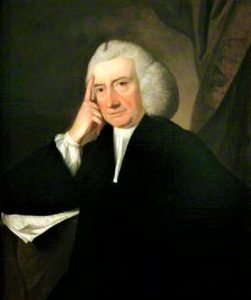
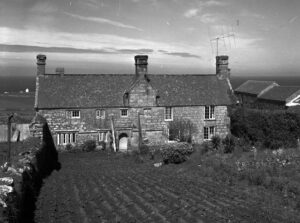
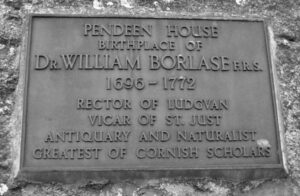
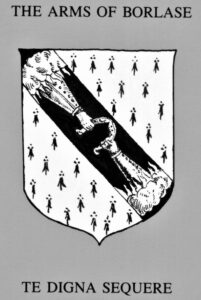
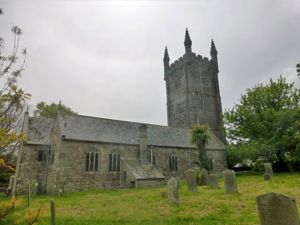
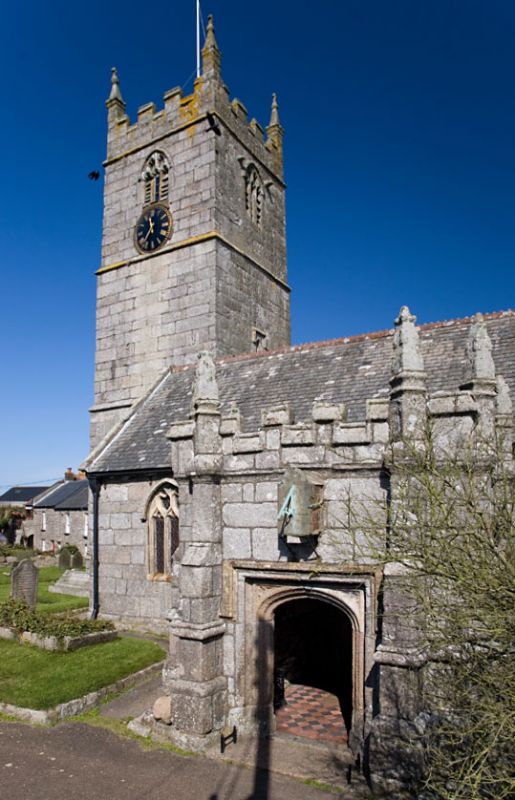
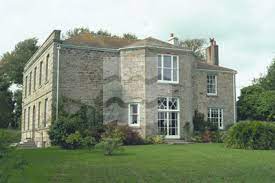
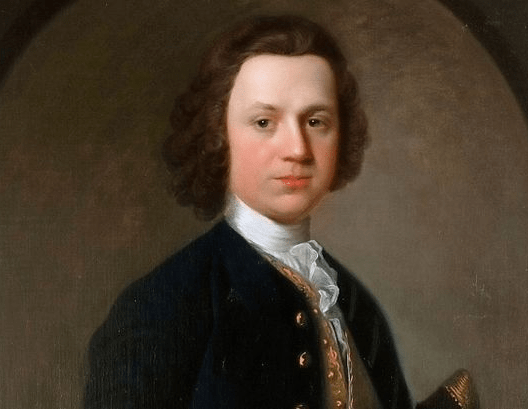
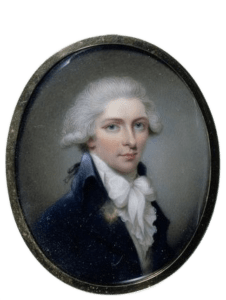
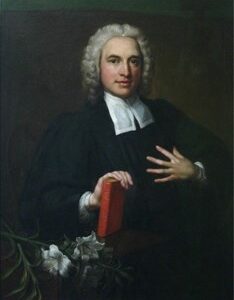
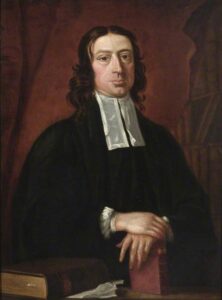
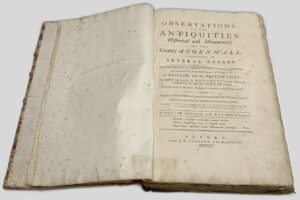
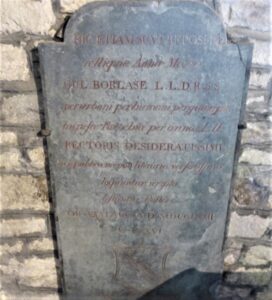
![[114] Voice - Ertach Kernow- 310822A William Borlase 'Above want below envy' [L] Ertach Kernow - William Borlase 'Above want below envy'](https://www.cornwallheritage.com/wp-content/uploads/2022/09/114-Voice-Ertach-Kernow-310822A-William-Borlase-Above-want-below-envy-L-240x300.jpg)
![[114] Voice - Ertach Kernow- 310822B William Borlase 'Above want below envy' [L] Ertach Kernow - William Borlase 'Above want below envy'](https://www.cornwallheritage.com/wp-content/uploads/2022/09/114-Voice-Ertach-Kernow-310822B-William-Borlase-Above-want-below-envy-L-241x300.jpg)
![[114] Ertach Kernow Heritage Column - 31st August 2022 - Gorsedh Kernow Esedhvos Ertach Kernow Heritage Column - 31st August 2022 - Gorsedh Kernow Esedhvos](https://www.cornwallheritage.com/wp-content/uploads/2022/08/114-Ertach-Kernow-Heritage-Column-31st-August-2022-Gorsedh-Kernow-Esedhvos-266x300.jpg)